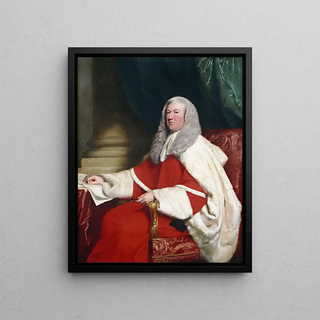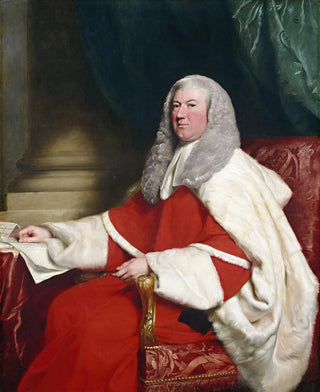Art print | Baron Graham - John Singleton Copley


View from behind

Frame (optional)
In the vast panorama of art history, some works stand out for their ability to capture the essence of an era, to reveal the subtleties of a personality, or to evoke deep emotions. The Baron Graham - John Singleton Copley art print is a perfect example. This iconic portrait, created by one of the masters of American portraiture, immerses us in the refined universe of the 18th century. Through this painting, Copley does not merely depict a man; he immortalizes a moment, an attitude, a social stature. Every brushstroke, every shade of color, speaks of the aristocracy of his time, while inviting us to reflect on identity and status.
Style and uniqueness of the work
Copley's style is characterized by striking realism, meticulous attention to detail, and an ability to convey complex emotions. In the portrait of Baron Graham, the artist succeeds in blending the rigor of classicism with a sensitivity unique to his era. The pose of the subject, both imposing and relaxed, reveals a perfect mastery of composition. The drapery of his clothing, rendered with remarkable precision, almost feels tangible, while the background, often understated, highlights the central figure. Copley excels in the use of light and shadow, creating an atmosphere that transcends the simple portrait to become a true scene of life. The chosen color palette, rich and nuanced, enhances this impression of depth and intimacy, making each gaze a suspended moment in time.
The artist and his influence
John Singleton Copley, an emblematic figure of American portraiture, managed to establish himself in an art world dominated by European influences. Born in Boston in 1738, he captured the spirit of his time while developing a style that was uniquely his own. Copley was one of the first artists to explore the psychology of the characters he portrayed, thus establishing a connection between the viewer and the subject. His work not only influenced his contemporaries but also paved the way for many American artists who followed, laying the foundations of a national artistic identity. Through his portraits, he managed to transcend

Matte finish

View from behind

Frame (optional)
In the vast panorama of art history, some works stand out for their ability to capture the essence of an era, to reveal the subtleties of a personality, or to evoke deep emotions. The Baron Graham - John Singleton Copley art print is a perfect example. This iconic portrait, created by one of the masters of American portraiture, immerses us in the refined universe of the 18th century. Through this painting, Copley does not merely depict a man; he immortalizes a moment, an attitude, a social stature. Every brushstroke, every shade of color, speaks of the aristocracy of his time, while inviting us to reflect on identity and status.
Style and uniqueness of the work
Copley's style is characterized by striking realism, meticulous attention to detail, and an ability to convey complex emotions. In the portrait of Baron Graham, the artist succeeds in blending the rigor of classicism with a sensitivity unique to his era. The pose of the subject, both imposing and relaxed, reveals a perfect mastery of composition. The drapery of his clothing, rendered with remarkable precision, almost feels tangible, while the background, often understated, highlights the central figure. Copley excels in the use of light and shadow, creating an atmosphere that transcends the simple portrait to become a true scene of life. The chosen color palette, rich and nuanced, enhances this impression of depth and intimacy, making each gaze a suspended moment in time.
The artist and his influence
John Singleton Copley, an emblematic figure of American portraiture, managed to establish himself in an art world dominated by European influences. Born in Boston in 1738, he captured the spirit of his time while developing a style that was uniquely his own. Copley was one of the first artists to explore the psychology of the characters he portrayed, thus establishing a connection between the viewer and the subject. His work not only influenced his contemporaries but also paved the way for many American artists who followed, laying the foundations of a national artistic identity. Through his portraits, he managed to transcend






